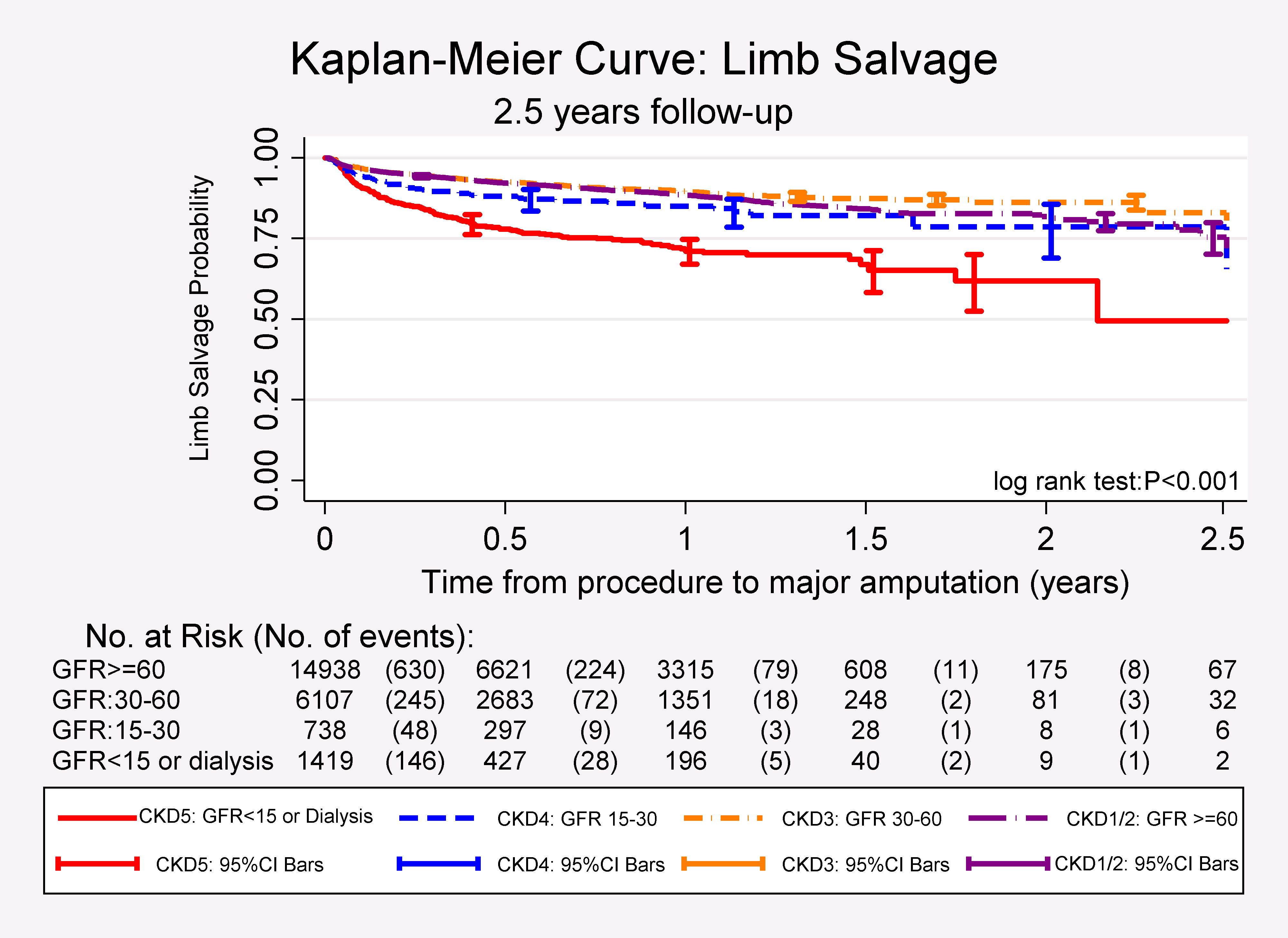Renal Function Predicts Limb Loss Following Infrainguinal Bypass in The Vascular Quality Initiative Database
Besma J. Nejim, MBChB, MPH, Isibor Arhuidese, MD, MPH, Satinderjit Locham, MD, Hanaa Dakour Aridi, MD, Christopher Abularrage, MD, Mahmoud B. Malas.
Johns Hopkins Medical Institutions, Baltimore, MD, USA.
Objectives: Patients with compromised renal function are known to suffer worse postoperative outcomes. The aim of this study is to evaluate the added risk of chronic kidney disease (CKD) on lower extremity bypass (LEB) adverse outcomes.
Methods: Patients who underwent LEB in the Vascular Quality Initiative registry from 2003 to May 2015 were examined. Primary outcome is ipsilateral major amputation at 30 months. Life tables, robust Cox proportional hazard and Wilcoxon log rank tests were implemented to estimate the hazard ratios and survival functions.
Results: A total of 24,303 patients were identified. Of those, 1,435(6.2%) had a GFR<15 or were on dialysis (CKD5), 748 (3.2%) had a GFR 15-30 (CKD4), 6,147 (26.3%) had a GFR 30-60 (CKD3) and 15,081 (64.3%) had a GFR≥ 60 (CKD1/2). Black race was more reported in CKD5 (CKD5: 27.7%, CKD4: 10.2%, CKD3: 9.6% and CKD1/2: 13.3%; P<.001). Diabetes mellitus was more prevalent in patients with CKD5 (75.8% in CKD5 vs 41.5% in CKD1/2, P<.001). The majority of patients presented with critical limb ischemia, particularly in advanced kidney disease (93.2% in CKD5 vs 65.3% in CKD1/2; P<.001). Due to differential loss of follow-up in patients with CKD5, analysis time was restricted to 2.5 years. CKD5 was associated with 50% additional risk of amputation compared to CKD1/2 [adjusted Hazard Ratio (aHR): 1.50; 95%CI: 1.17-1.92; P=.001] (Figure). Critical limb ischemia increased the amputation risk by fourfold [aHR: 4.35 (3.52-5.38); P<.001]. Other predictors of limb loss were black race [aHR: 1.38(1.11-1.73); P=.005]; prosthetic grafts [aHR: 1.67 (1.44-1.94)] and other veins as compared to the great saphenous vein [(aHR: 1.62 (1.24-2.13)]; as well as diabetes, immobilization and prior contralateral major amputation. Postoperative statin protected against limb loss [aHR: 0.82 (0.71-0.95); P=.009]. Overall, dialysis was associated with nearly threefold increase in the incidence rates of limb loss [Incidence rate ratio: 2.89 (2.45-3.39); P<.001].Conclusion: In this cohort of patients undergoing LEB, renal function was an independent predictor of limb loss. Identification of CKD patients' characteristics that put them under higher risk for adverse limb outcomes and maximizing these risk adjustments can ultimately provide better surgical care.

Back to 2017 ePosters




